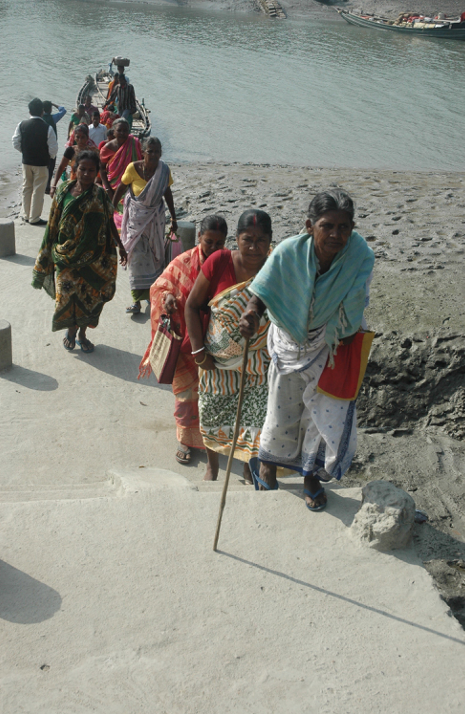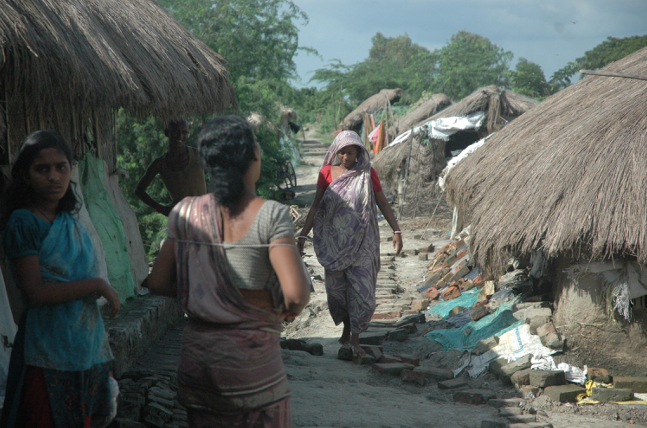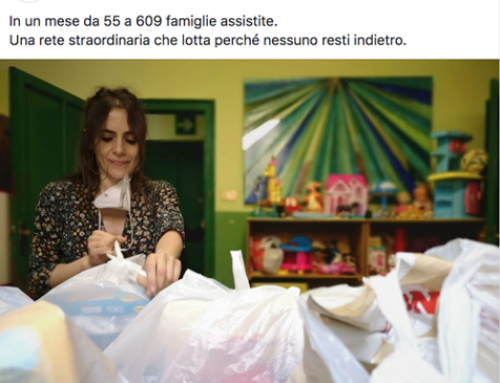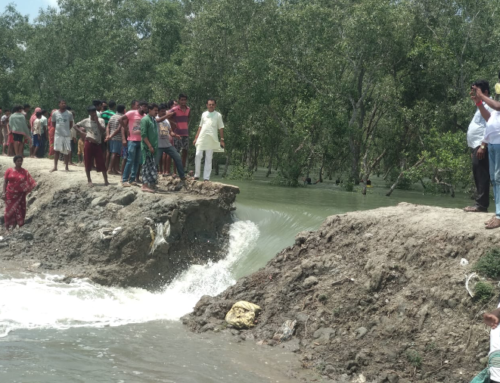Anjali1 was diagnosed with cancer in 2017. In February of 2020 her husband Taruq, decided to take Anjali for treatment to Pondicherry’s JIPMER2 government hospital. JIPMER was well-known amongst Taruq and Anjali’s acquaintances for providing free cancer treatment. After borrowing a large sum of money for expenses, they set off from their home on one of the last inhabited islands of the Sundarbans in West Bengal to Pondicherry, a journey of over 2000 kilometers (or 1,200 miles). In the course of waiting their turn to see a doctor, a series of unforeseeable events began to unfold. First, a global pandemic broke out and JIPMER became a Covid-19 designated hospital. With this shift in priorities, Anjali’s turn to see a doctor never came. Simultaneously, India’s Prime Minister Narendra Modi announced a nationwide lockdown with just four hours’ notice, leaving approximately 43 million of India’s poorest citizens stranded, away from home, and without any safety nets. Two months after the Covid- induced lockdown, a super cyclone hit the Sundarbans destroying the roof of Taruq and Anjali’s home. Adding to an already grim scenario, precisely ten days after this cyclone, Taruq was laid off his job.
An Ordinary Crisis?
In what follows, I unpack each of these events, in their extremity and their ordinariness. In doing so, this essay is a provocation for two distinct, yet intersecting, thoughts. First, I try to think about the temporal beginnings and endings of a series of crises (Das 2007). Secondly, alongside forces past and present, I ask which individuals get to define the terms upon which a crisis is understood and defined?
Let me begin with how a particular set of intersecting crises have come to manifest in specific lives. While the crisis of Covid has been global, the way in which India’s lockdown was implemented is now widely understood as the biggest humanitarian crisis on the Indian subcontinent since the partition of India. Even though Taruq and Anjali were in Pondicherry to seek medical care, they were stuck in the same frantic position as millions of other migrants desperate to return home. After a gruelling two-month wait, when the couple finally made it back to West Bengal, they arrived just before cyclone Amphan hit large parts of Bengal’s rural hinterland. The job Taruq was laid off from was at a tourist lodge in the Sundarbans owned by the Kolkata-based company, Vivada.
The Sundarbans forests are a UNESCO World Heritage site renowned for being the only mangrove landscape in the world home to Bengal tigers. As a result, in the past two decades, a large number of “eco-tourism” lodges have opened, allowing tourists the opportunity to visit mangroves and see tigers in the wild. Taruq was one of the staff members of a tourist lodge named Tora. Tora’s owner Vivada also owns a fleet of luxury cruise ships, but their main business is in commercial shipping vessels that transport materials from Kolkata to Dhaka. This is “eco-tourism” promoted by an industrial group whose business interests in transporting toxic materials through the Sundarbans waterways directly threatened the ecosystem.
What does it say about this current moment of intersecting crises when a large company, at the height of Covid-19 and after a super cyclone decimates the Sundarbans, decides to lay off its staff? Vivada’s form of “green grabbing” referring to the means through which eco-tourism works within the logics of neoliberal capital (Fairhead, Leach and Scoones 2012), is not new or unique. What is perhaps new is the birth of a new form of inhumanity in India. Upon hearing the news, I wrote to one of the members of the senior management of the company who replied saying that she was “worried about her own job.” Another employee exclaimed how hard the tourism industry had suffered in the past two months, lamenting the fact that their newly acquired luxury yachts were sitting unused. The intersection of Covid-19 and Cyclone Amphan reveal what is perhaps a far more egregious calamity, that is, the crisis of conscience in India.
Taruq’s predicament of unemployment was overlaid by the damage of the cyclone itself. A tree fell on their newly constructed brick house and cracked the alabaster roof. Taruq, like several others, had rebuilt his home four times in his own lifetime. The last time he had lost everything to the belly of the river (nodir gorbey) was only slightly over a decade ago during Cyclone Aila in 2009.

Cyclones, tidal surges, and storms have been endemic to the Bay of Bengal delta long before the global alarmism around climate change. Photo by Megnaa Mehtta. (India)
While the Covid-19 lockdown created a new form of hardship, both cyclones and the lack of stable sources of income are by no means new adversities for the residents of the Bengal delta. From the perspective of Anjali and Taruq, the real inconvenience (ashuvidha) was the fact that due to the Covid-19 induced lockdown they were stranded in Pondicherry without being able to fulfill their long-awaited aspiration to see a doctor at JIPMER. Even though the cost of treatment would be free, they had to pay rent for their hired room, for food, and the exorbitant costs of transportation. The couple had to traverse four different states, using five separate modes of transportation, to get to the hospital. Such medical pilgrimages are not uncommon in the Indian subcontinent. People travel long distances to shrines and hospitals to find cures for different ailments and afflictions. However, Anjali and Taruq’s journey ought to be contextualized by the fact that Bali Island, where they and 40,000 others reside, does not have even one primary government healthcare center.
An Old Crisis?
This leads me to ask, when exactly does a crisis begin? Anjali and Taruq took an arduous and in the end futile journey to a hospital they have deep faith in, built by French colonialists in India. Their lives, and those of their parents and grandparents have been shaped and re-shaped by direct forces of colonial extraction, by the political unrest and mass exodus generated by empire. Their parents came to live in the Sundarbans due to and during the partition of India, one of the largest mass exoduses in human history (Alexander, Chatterjee, Jalais 2015; Chatterjee 2007). Anjali and Taruq are ecological and political refugees, who have inherited an earlier history of displacement.
Spiralling back, does the intersection of crises begin in 1757, when the region was given as a land grant or jagir to Lord Clive? Or perhaps even earlier, in 1528, when the Portuguese gained rights to take raw materials and slaves from the Bengal delta? Or perhaps I could dig further back to the Bengal Sultanate, and even earlier still, to think of the temporal beginnings and endings that shape 21st century events in their lives.
The ongoing intersecting crises in their lives are not only shaded by histories of colonialism, but their tempos also have a cyclical nature to them. The JIPMER hospital that Taruq and Anjali were so eager to visit in Pondicherry—also an erstwhile French colony—was established in 1823 as the École de Médicine de Pondichéry, one of the earliest institutions of tropical medicine. Its mission was to train surgeons and doctors of the French navy and troupes coloniales or “colonial troops,” to deal with disease and the then pandemics of cholera. In thinking about what “event” might be seen as a disaster, or as an intersecting set of crises, the fact that there is no basic healthcare for many of the millions of people who reside next to a global conservation hotspot, is perhaps itself worthy of being an event in its endemic appalling uneventfulness.

The Sundarbans islands suffer from poor connectivity. The mainland and other neighbouring islands can be accessed only via motorized boats, and the lack of bridges and unreliable road transport can convert small injuries into fatalities. Photo by Megnaa Mehtta. (India)

The majority of Sundarbans residents are ecological and political refugee, who have already inherited a history of displacement. Photo by Megnaa Mehtta. (India)
Same Conversations
Taruq and I had been speaking over the phone during his time in Pondicherry. When I finally got through to him four days after cyclone Amphan hit the Sundarbans, our conversation was as follows. I was calling him from London.
Megnaa (M): Taruq da, how are you? Can you hear me? Has there been a lot of damage (khoti) because of the cyclone (jhod)? How are Sushila and Suraj [his children]?
Taruq (T): Megnaa di? Where are you? Are you alright? Yes, there has been damage (khoti toh hoye che). The roof has cracked, the fish in the pond all died, the kids were frightened (bhoiy pey che), how they cried…but we are well. How are you?… How is your health? You take care of yourself, we hear things are very bad in London (bideshery paristhithi khoob kharab), don’t leave your house, (bairey khothai jaabey na). Stay safe (savdhaaney thakbey)…are your mother and father well?
M: I am not leaving the house, I am fine Taruq da. I am worried about all of you. What will you do now that the roof has cracked? And the fish in the pond…?
T: Yes, please stay safe. On your side [of the world] Corona is running everywhere, don’t leave the house…we will have to fix the roof…. I am in a lot of debt. What to do, what else will we do… So what are you cooking?
M: I’ve been really worried about all of you.
T: So have you eaten lunch? What did you eat? (ki diye keycho) What are you doing right now?
M: I’m just sitting and writing.
T: All day just writing and writing on your laptop, when will you get married?…next time you come visit us, you better not come alone.
I was touched by his concern for my well-being and that of my family. He was right to say that things were “very bad in London.” But a cyclone had just devasted their home. And yet, in our very first conversation after the cyclone in which Taruq recounted the damages to his home, the deteriorating health of his wife, and the fact that he had once again spiralled into debt, within a few minutes he reverted to expressing his deep-seated concern for me. Far away from my family, he asked in all seriousness, “Are you going to wait until you become an old lady (budi) before you get married?”
In the past month, and on dozens of phone chats with friends in different islands of the Sundarbans, the pattern was similar. After a few minutes of talking about broken homes and submerged ponds, the greater part of the conversation is about whether I had eaten, what I had eaten, how my family was doing and when, for crying out loud, was I going to get married.
As I write about the intersecting crises in the lives of people I know in the Sundarbans, it seems as if the boundaries between critical events, quasi-events, and the ordinary hardships of everyday life in situations of poverty completely blur (see Das 1995; 2007; 2015). I reflect on the conversations with my friends in the field from the past month, only to realize that not very much has changed in the way that we talk to each other. What has changed is their increased concern for me away from home, my parents, in a city where “the virus is running everywhere” and no one grows their own vegetables. What has also changed is my perception of what they might be going through. I certainly think of their lives in crisis. Cancer, broken homes, no work. Aren’t these ingredients for what might objectively be a crisis? But when Taruq describes stories, as he references other moments in his own life, I am reminded of the fact that this is not the first medical crisis in the family and neither is this the first cyclone. This is not the first time the roof has cracked.
Every time I put the phone down, I asked myself if one defines a crisis in relation to the number of times a terrible event has occurred? Is it about the quantity or is it about the scale of event? What kinds of intersecting and cyclical material distresses—from colonialism to Covid-19, cyclones and being laid off work—make for a crisis? Could it be though that these are entirely the wrong questions to ask? In the words of anthropologist Didier Fassin,
…[P]olitics of life are related to ethics of life…it is thus a shift from the singular to the plural – from life in general to lives in particular. It is also a move from the normative to the empirical – from ideal value to actual value. What are lives worth in different contexts and milieus? What do these variations reveal about the corresponding societies? (Fassin 2019: 92).
Perhaps my conversations with Taruq reveal not just the obvious intersecting crises of Covid-19 and cyclone Amphan, but also the intersections and clear divergences of perspectives in terms of what and which specific groups of people come to qualify as living lives in crisis.
This essay is an invitation to think about the conjugated aspects of crises through long epochs, and how the birth of new forms of inhumanity in India is interspersed with repetitions of cyclical crises. It is also about thinking of particular lives or “lives in particular” and their emplacements within specific milieus that reveal the more complex contours and aspirations of a life, a home, and the distinctly long and hope-filled journeys we each take to fulfil these.
Notes:
[1] The names of the individuals in this essay have been changed in order to protect their identity.
[2] Jawaharlal Institute of Postgraduate Medical Education and Research
References:
Aga, Aniket, and Chitrangada Choudhury. n.d. “India’s Pandemic Response Is A Caste Atrocity.” NDTV. Accessed [July 19, 2020]. https://www.ndtv.com/opinion/india-s-pandemic-response-is-a-caste-atrocity-2236094.
Alexander, Claire E., Joya Chatterji, and Annu Jalais. 2015. The Bengal Diaspora: Rethinking Muslim Migration. London: Routledge
Chatterji, Joya. 2007. The Spoils of Partition: Bengal and India, 1947-1967. Cambridge: Cambridge University Press.
Bonilla, Yarimar. 2020. “The Swarm of Disaster.” Political Geography 78 (April): 102182.
Das, Veena. 1995. Critical Events: An Anthropological Perspective on Contemporary India. Oxford: Oxford University Press.
—-2007. Life and Words: Violence and the Descent into the Ordinary. Berkeley: University of California Press.
—-2015. Affliction: Health, Disease, Poverty. New York: Fordham University Press.
Fassin, Didier. 2018. Life: A Critical User’s Manual. Cambridge: Polity Press.
Fairhead, James, Melissa Leach, and Ian Scoones. 2012. “Green Grabbing: A New Appropriation of Nature?” Journal of Peasant Studies 39 (2): 237–61.
Jalais, Annu. 2010. Forest of Tigers: People, Politics and Environment in the Sundarbans. London: Routledge.
Mukhopadhyay, Amites. 2016. Living with Disasters: Communities and Development in the Indian Sundarbans. Cambridge: Cambridge University Press.
Cite as: Mehtta, Megnaa. 2020. “A New Crisis and an Old Conversation: Reflections on Quotidian Care in the Sundarbans” In “Intersecting Crises.” In “Intersecting Crises,” Calynn Dowler, editor, American Ethnologist website, 12 October 2020, [https://americanethnologist.org/panel/pages/features/pandemic-diaries/introduction-intersecting-crises/a-new-crisis-and-an-old-conversation-reflections-on-quotidian-care-in-the-sundarbans/edit]
Megnaa Mehtta is an environmental anthropologist with an interest in values, emotions, mythologies and ideas of well-being, and how they relate to debates in global conservation and political ecology. As a postdoctoral fellow at the University of Sheffield, she is currently working on her book manuscript tentatively titled Conserving Life: Political Imaginaries from a Forest.




